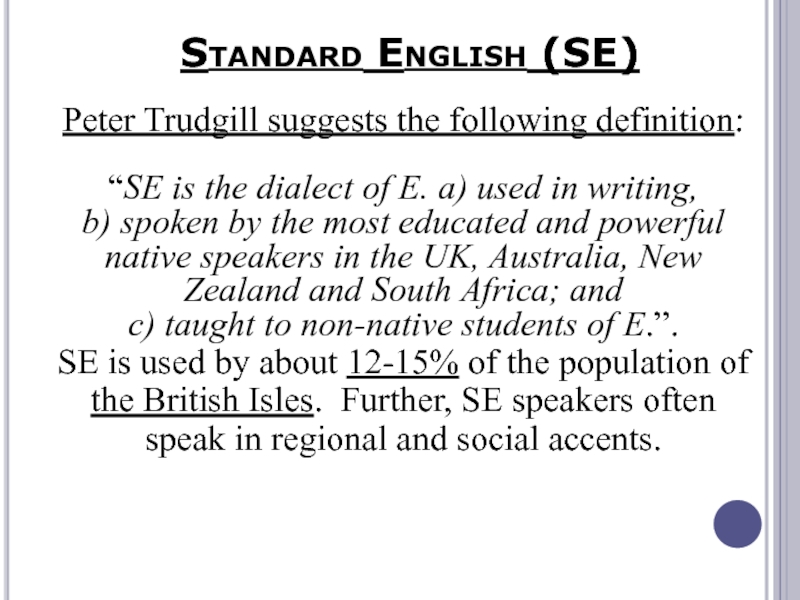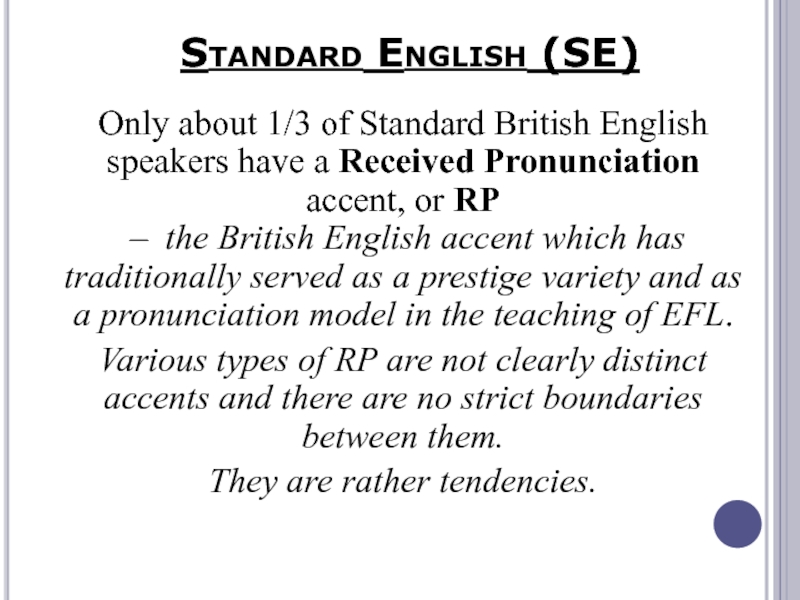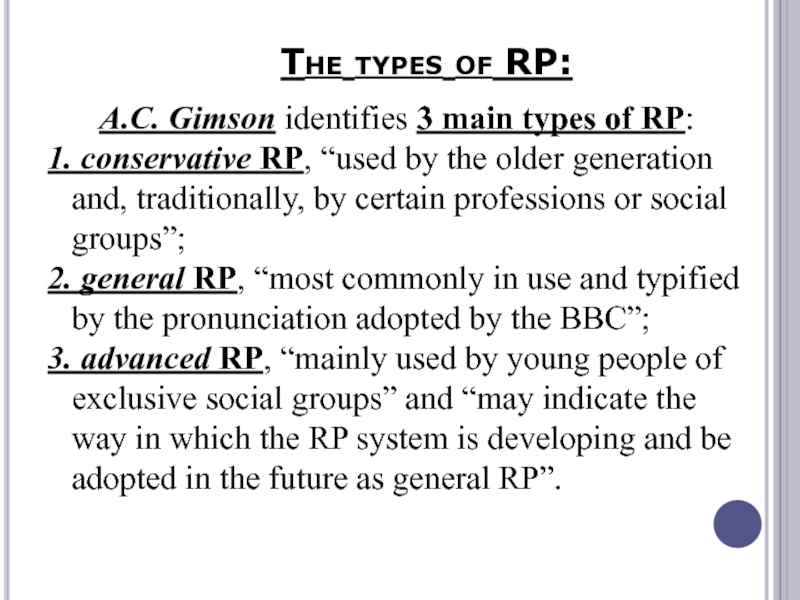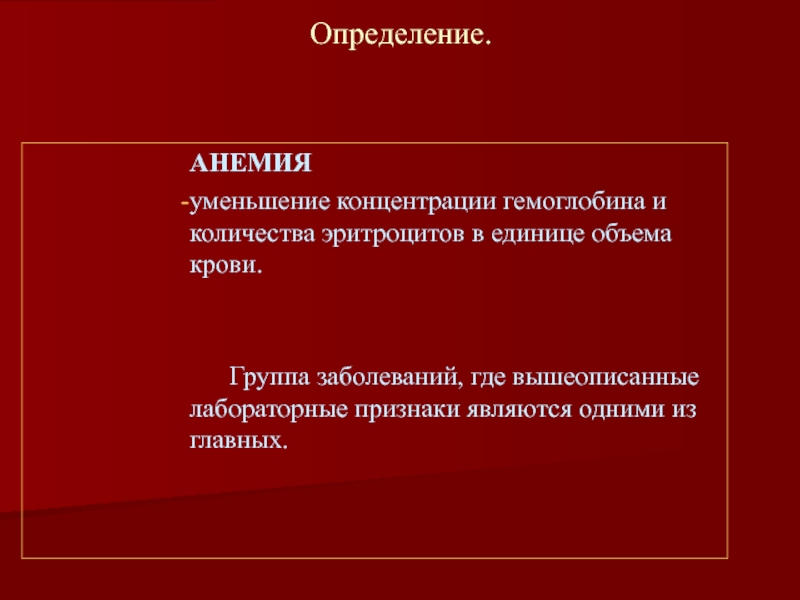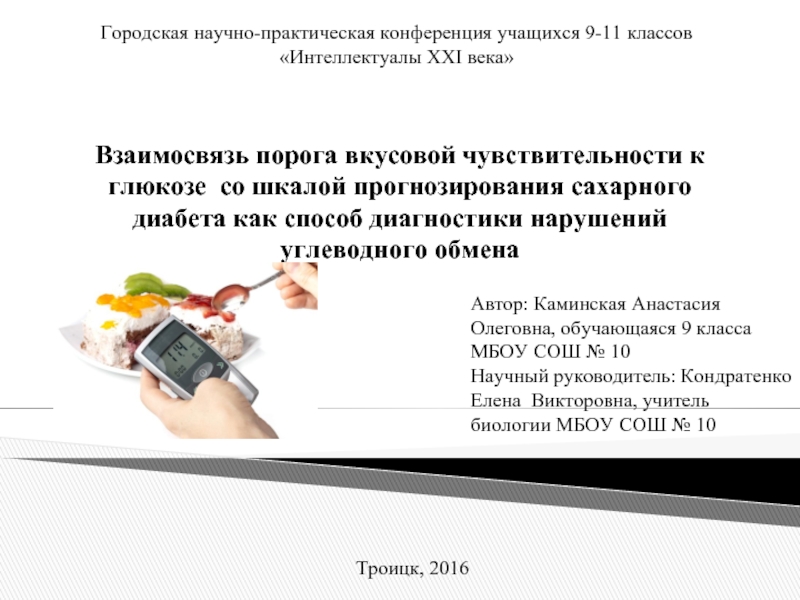Слайд 1Standard Pronunciation & Dialectology
Слайд 2SOCIOLINGUISTICS & DIALECTOLOGY
Sociolinguistics is a branch of linguistics which
studies the functioning of the phonetic, lexical and grammatical aspects
of language in society.
Dialectology is the academic study of the phonological, morphological & lexical aspects of traditional dialect forms.
Dialect is a variety of language in which the use of grammar and vocabulary identifies the regional or social background of the user.
Language varieties whose features of pronunciation signal regional or social identity comprise the notion “accent”.
Слайд 3Standard & non-standard languages
We should distinguish between the 2
notions
1) “language” and 2) “a variety of language”:
1a) the
phenomenon of vocal and written communication among human beings
[human language];
1b) a system of communication used by the people of a particular country or area
[the English language].
2) a set of linguistic items with similar social distribution
[British English and American English].
Слайд 4‘Standard language’ denotes a written language and refers to the
fixity of spelling, lexicon and grammar, codified as a set
of established rules.
Non-standard language varieties are accents or dialects with little or no prestige.
A linguistic process of reducing variation motivated by particular social or political interests is standardization.
A spoken standard is based on the norms of the written model. However, pronunciation has an extremely variable and changing nature, and is more resistant to standardization.
Слайд 5The 4-step model of language standardisation
1. the selection отбор
the selection
of a variety as the basis of standard;
the chosen
variety gains prestige with the people who use it.
For political & economic reasons, around the 15th century, prestige and high status was attached to the educated speech of the capital (London) and the surrounding counties.
Слайд 62. the codification of form кодификация
the process whereby the rules of
the chosen variety are explicitly and officially formulated in dictionaries
and grammars to minimize its variation in form;
In 1755 Samuel Johnson produced a 2-volume “A Dictionary of the English Language” which included a history of the language, a grammar, an extensive list of words of basic general vocabulary…
Слайд 7
3. the elaboration of function развитие
refers to the activities aimed at
expanding the functions of the chosen variety: administration, education, science,
literature, economic life, etc.
Слайд 84. the acceptance by the community принятие
refers to the diffusion and
acceptance of the norm by the relevant population;
the standard
must have a body of users.
During the 18th and the first half of the 19th centuries, there was a growing trend of correctness and purism determined by the increasing power and prosperity of the middle classes, whose members wished to erase all traces of the working-class origins in their speech.
Слайд 9Standard English (SE)
Peter Trudgill suggests the following definition:
“SE is the
dialect of E. a) used in writing,
b) spoken by
the most educated and powerful native speakers in the UK, Australia, New Zealand and South Africa; and
c) taught to non-native students of E.”.
SE is used by about 12-15% of the population of the British Isles. Further, SE speakers often speak in regional and social accents.
Слайд 10Standard English (SE)
Only about 1/3 of Standard British English speakers
have a Received Pronunciation accent, or RP
– the British
English accent which has traditionally served as a prestige variety and as a pronunciation model in the teaching of EFL.
Various types of RP are not clearly distinct accents and there are no strict boundaries between them.
They are rather tendencies.
Слайд 11The types of RP:
A.C. Gimson identifies 3 main types of
RP:
1. conservative RP, “used by the older generation and, traditionally,
by certain professions or social groups”;
2. general RP, “most commonly in use and typified by the pronunciation adopted by the BBC”;
3. advanced RP, “mainly used by young people of exclusive social groups” and “may indicate the way in which the RP system is developing and be adopted in the future as general RP”.
Слайд 12Cruttenden suggests 3 types of RP:
1. general RP;
2. refined
RP, “commonly considered to be upper-class” & associated with “upper-class
families and with professions traditionally recruited from such families” ;
3. regional RP, “the type of speech which is basically RP except for the presence of a few regional characteristics unnoticed even by other speakers of RP”.
Слайд 13J.C. Wells speaks of 4 types of RP:
1. Mainstream RP,
the unmarked, neutral, modern type of RP, typically spoken by
BBC newsreaders;
2. Upper-crust RP (URP), the more conservative and old-fashioned type of RP, popularly associated with an elderly Oxbridge don, an upper-class army officer, or the older members of the royal family;
3. Near-RP, strongly modified regional accents close to Mainstream RP, but including a few regional pronunciation features;
4. Adoptive RP, “spoken by adults who did not speak RP as children”.
Слайд 14The social differentiation of British dialects & accents
The social
dialect (sociolect) is a variety of language
used by a
certain social group and having distinctive features of vocabulary, grammar, and pronunciation.
The social accent comprises only pronunciation.
Sociolects help to identify the status of speakers in Great Britain, there is less regional variation in the speech of the higher than in that of the lower socioeconomic classes.
Слайд 15Sociolects:
1) ‘acrolect: акролект, наиболее рафинированная форма литературного языка;
the language variety
of a speech community that is closest to the standard
or has the highest prestige; RP/BBC English/Queen’s English:
“letter” – aspirated [‘lethə];
2) mesolect: a variety of language intermediate between the highest & the low with the reduced social status:
“letter” – glottal stop [‘leʔə];
3) basilect: базилект, просторечный вариант языка;
the least prestigious variety of a language most differing from the local standard; it has the lowest social status:
“letter” – intervocalic voicing [‘leɖə].
Слайд 16THE GEOGRAPHICAL DIFFERENTIATION OF BRITISH DIALECTS AND ACCENTS
The geographic
dialect is spoken by people of the area or locality.
Geographic dialects include
local and regional ones.
As a rule, differences between the neighbouring local dialects are rather small, but, in travelling farther in the same direction, differences accumulate, and
local dialects and accents comprise regional ones.
Слайд 17British English (BrE)
1. England (English English)
1.1. Received Pronunciation (RP)
1.2.
Northern English
1.3. East Midlands English
1.4. West Midlands English
1.5. East Anglian English
1.6. South East England
1.7. West Country dialects
Слайд 18British English (BrE)
2. Scotland (Scottish English)
2.1. Highland English
2.2. Glaswegian
3.
Wales
3.1. Welsh English
3.2. North East English
3.3. Pembrokeshire
dialect
Слайд 19British English (BrE)
4. Ireland (Republic of Ireland & Northern Ireland)
4.1.
Hiberno-English
4.2. Mid Ulster English
5. Isle of Man – Manx
English
6. Channel Islands – Channel English
(Jersey, Guernsey, Alderney, Sark).
Слайд 20NEXT SUBJECT:
“COMMUNICATIVE PHONETICS”








